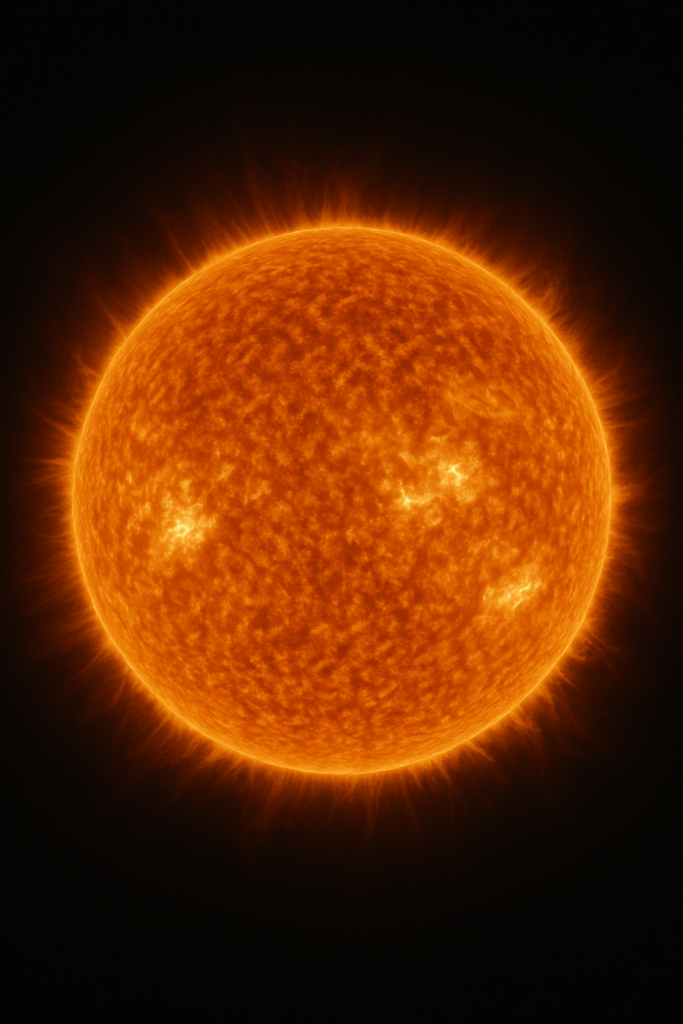The Formation of the Sun: What We Know and What We Can Still Learn
The Sun, our closest star, serves as the lifeblood of our solar system. Its heat and light make life on Earth possible, but its formation billions of years ago is a process shrouded in cosmic wonder. By delving into its origins, we uncover not only the Sun’s story but also clues about the birth of stars and planetary systems across the universe. Here’s what we know about the Sun’s formation and the mysteries that continue to challenge scientists.

The Nebular Hypothesis: A Cosmic Birth
The most widely accepted theory of the Sun’s formation is the nebular hypothesis. This theory suggests that around 4.6 billion years ago, a massive cloud of gas and dust, known as the solar nebula, began to collapse under its own gravity. The reasons for this collapse might have included a shockwave from a nearby supernova, compressing the nebula and sparking its transformation.
As the nebula collapsed, it started to spin, forming a flattened disk with the nascent Sun at its center. Due to gravitational forces, the majority of the nebula’s material concentrated at the center, where it grew hotter and denser. Eventually, nuclear fusion ignited, marking the Sun’s transition from a protostar to a full-fledged star.
The Protoplanetary Disk and Planet Formation
The spinning disk of gas and dust surrounding the young Sun, known as the protoplanetary disk, gave rise to the planets, moons, asteroids, and comets of the solar system. Within this disk, particles collided and coalesced, gradually forming larger bodies in a process called accretion. Over millions of years, this process resulted in the diverse planetary system we observe today.
What We Have Learned So Far
- Chemical Composition: The Sun is primarily composed of hydrogen and helium, which aligns with the abundances observed in the universe. Traces of heavier elements provide insights into the material inherited from previous generations of stars.
- Stellar Evolution Models: Observations of young stars in different stages of their formation help scientists refine models of stellar evolution, confirming much of what we know about how stars like the Sun are born.
- Helioseismology: By studying the Sun’s oscillations, scientists can probe its internal structure, gaining clues about its early formation phases.
- Cosmic Timing: Radiometric dating of meteorites reveals that the oldest solid materials in the solar system formed around 4.568 billion years ago, providing a timestamp for the Sun’s birth.
Unanswered Questions
While we’ve made significant progress in understanding the Sun’s origins, several questions remain:
- Trigger Mechanisms: What specific events initiated the solar nebula’s collapse? Was a supernova involved, or did other factors contribute?
- Angular Momentum: How did the Sun shed excess angular momentum to become the relatively slow rotator we observe today?
- Magnetic Fields: How did magnetic fields influence the Sun’s formation and the distribution of material in the protoplanetary disk?
- Early Evolution: What were the precise conditions during the Sun’s protostellar phase, and how did its early radiation shape the surrounding environment?
Looking Ahead
Advancements in technology, such as the James Webb Space Telescope (JWST) and ground-based observatories, allow astronomers to study young star systems and compare them to our Sun’s early history. Missions like Parker Solar Probe and Solar Orbiter are unraveling the Sun’s current behavior, providing indirect clues about its formation.
By piecing together data from a variety of disciplines—from astrophysics to planetary science—we continue to refine our understanding of the Sun’s origins. Each discovery brings us closer to comprehending not just our solar system’s beginnings but the universal processes that govern star formation.
In exploring the story of the Sun, we also uncover our own cosmic heritage, a tale written in the light of a star born billions of years ago.